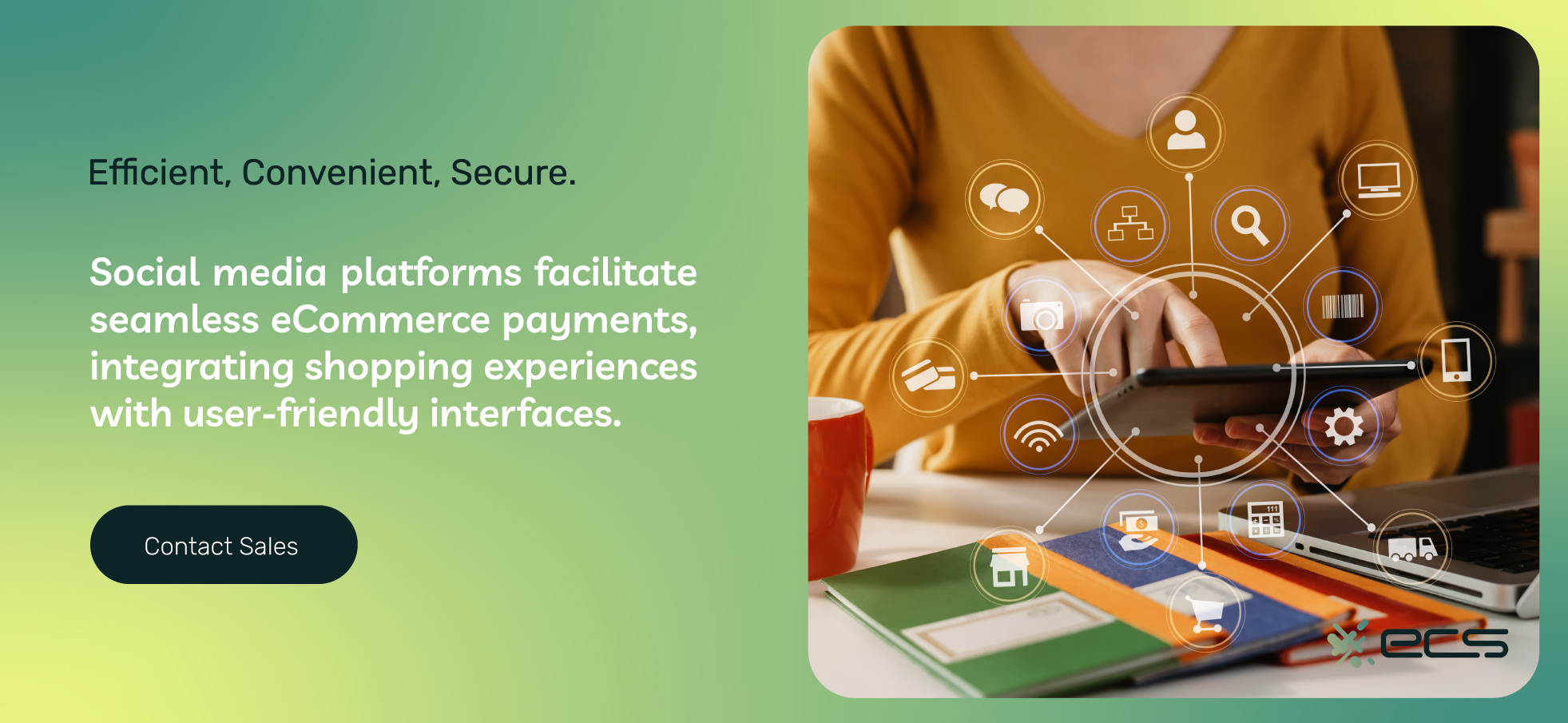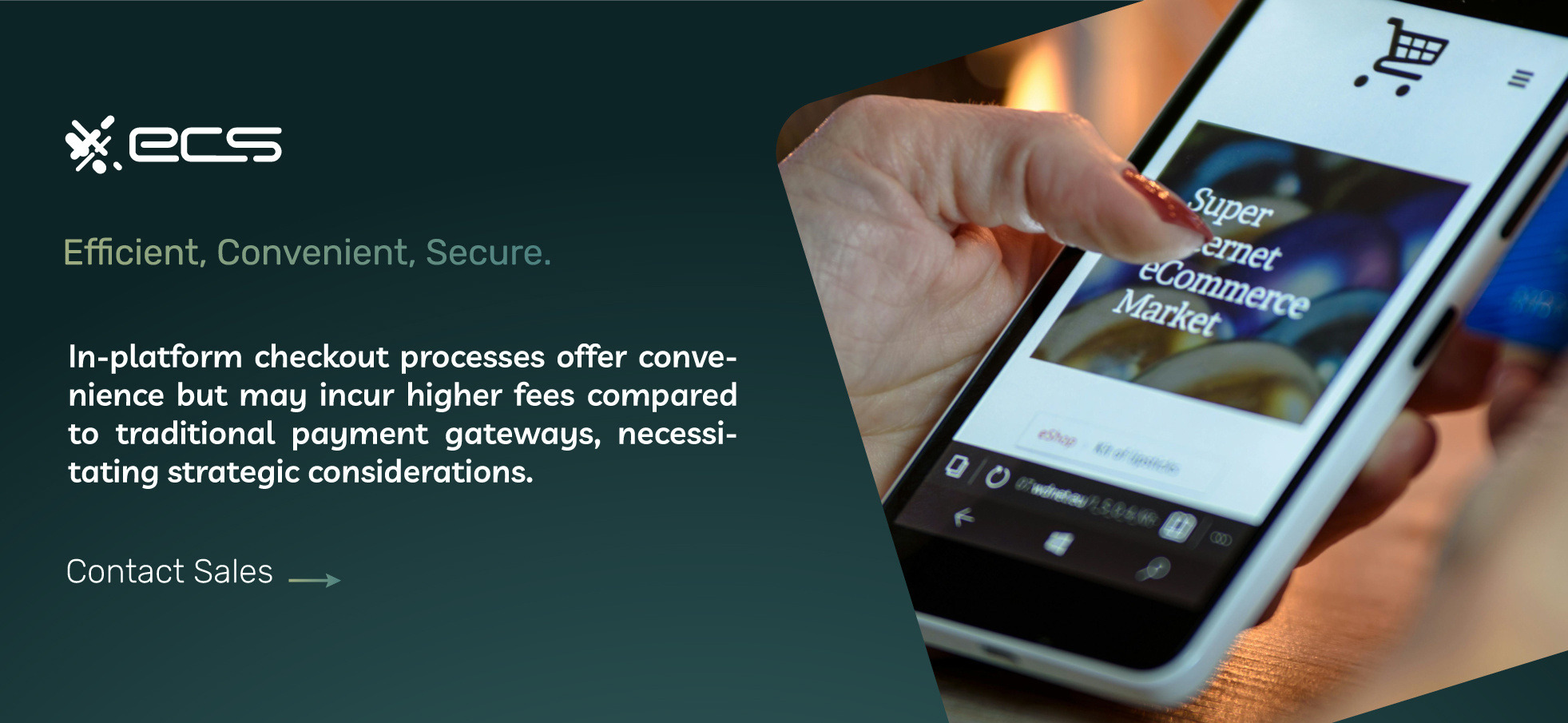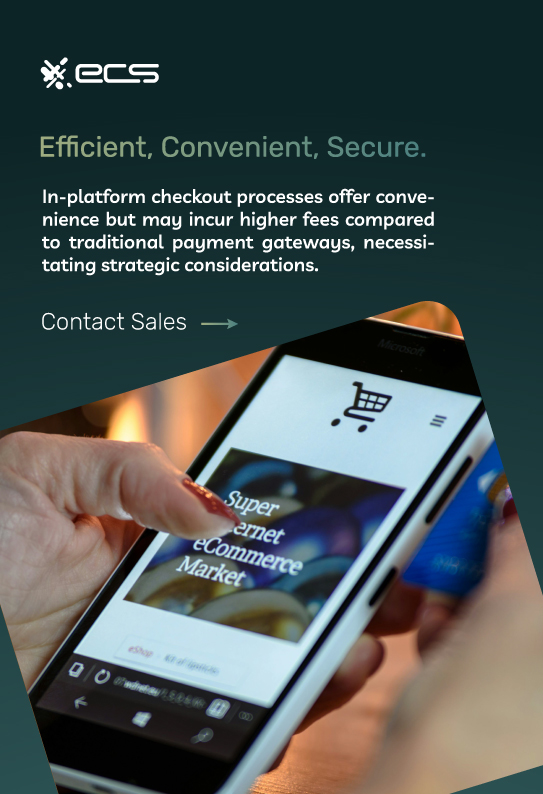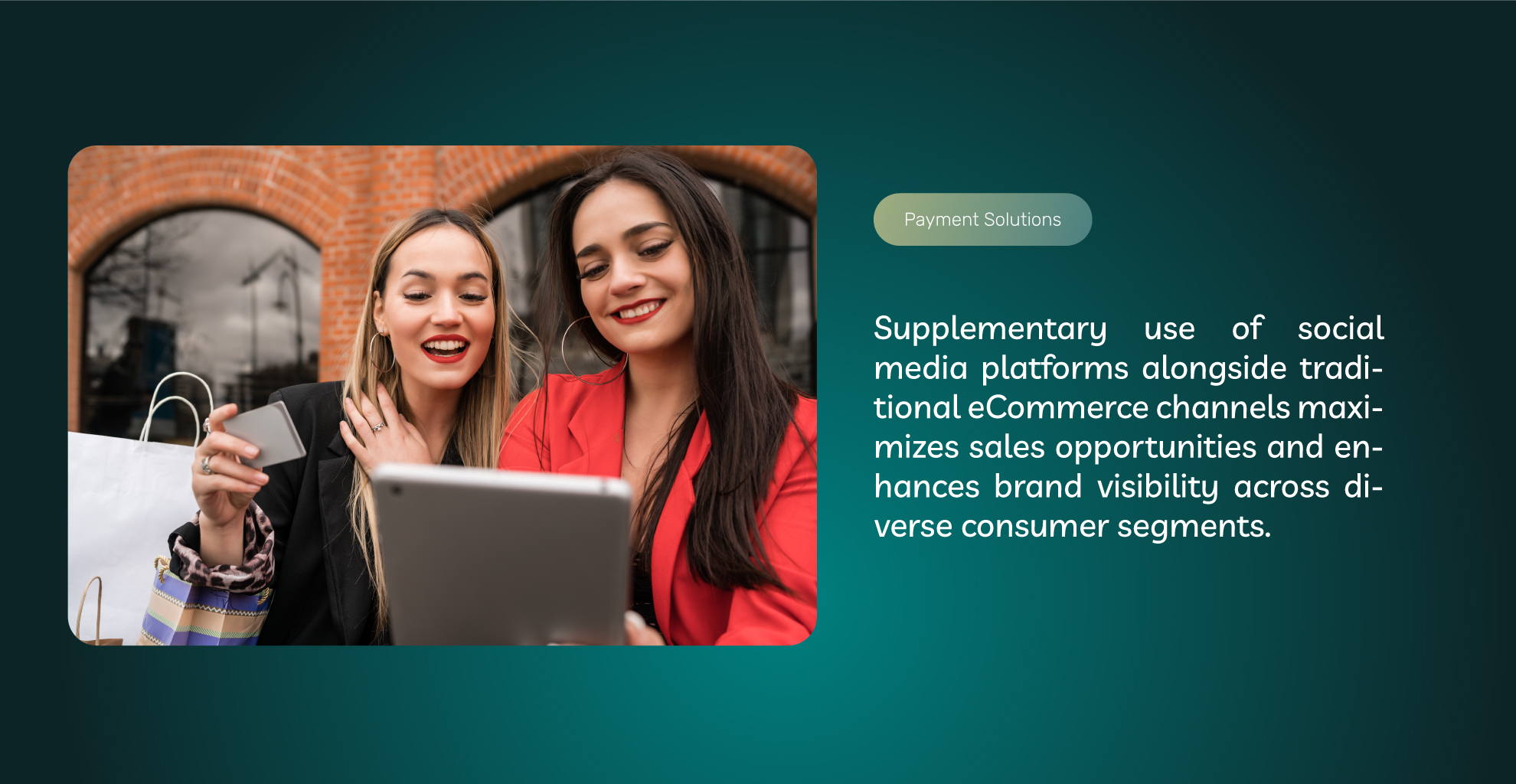Does social media have anything to do with eCommerce payments? Of course! Everything has something to do with social media these days…including online shopping. Let’s first delve into social selling and see where that brings us when it’s time to pay for something at an online retailer.
Once we examine how to get customers to check out at your eCommerce business, we’ll determine whether we should use the payment platform that social sites provide or direct customers to your own website.
The Power of Social Proof For Increased E-Commerce Payments
One of the biggest benefits of social media for businesses is its ability to provide social proof. Social proof is a psychological consensus (not unique to marketing) that people make decisions or take on viewpoints based on the actions of others—particularly a majority.
Think of a long line outside a restaurant or eatery. Our first thought is typically not, “Their customer service must be slow,” but rather, “This restaurant must be really good.” We see a lot of people eating there and assume that it says something positive about the business.
Social media can be a great way to generate social proof. When potential customers see loads of social media users posing with your product or endorsing your service, they start forming positive associations.

User Generated Content
One way to start snowballing social proof is through calls for user-generated content (UGC) and branded hashtags. User-generated content is when social media users—of their own volition—choose to post pictures of your goods or services and perhaps even tag you.
Every interaction with the customer should be (tastefully) saturated with a call to action to post UGC. For example, in brick-and-mortar stores, clear, large-letter signage suggests that customers take a selfie and tag your profile while using a certain hashtag(s) in their captions.
Hashtags categorize social media posts and allow browsers to scroll through content they enjoy. Social media algorithms also feed this content to users based on their interests and recent searches.
Hashtags And They Will Come
Some hashtags are very broad (#fishing #pizza #beer), some are localized #newyorkcity #la #kansas). Some hashtags are very niche (#momsofboys #gymrat #craftbrew), while some combine location with specific interests (#nycpizza #portlandbrews). You don’t want to overburden customers in your CTA with too many requests for different hashtags.
What you should do, at the very least, is ask them to use your branded hashtag. This is a hashtag that you’ve coined that’s unique to your business. You can technically trademark a hashtag, but most of the time, you don’t need to. The hashtag could be the name of your business or a catchy phrase associated with what you sell.
You can use your branded hashtag to search for all the pictures and posts social media users are crafting about you. In the comments to these posts, you can add additional hashtags that will give the posts more visibility (rather than asking the customer to remember and post all those hashtags).
Influencer Marketing Can Increase Your E-Commerce Payments
Influencer marketing is another form of social proof that is incredibly valuable to business owners. As mentioned, social proof usually operates most effectively when behaviors are exhibited by an apparent majority. However, sometimes, an influential person can carry just as much weight as a whole crowd.
That’s where social media influencers come into play. Social media influencers are users whose posts get a lot of attention. Other users follow them because they might be interested in the influencer, their life, and what they have to say.
Social media has largely become a space of influencers, where certain users get millions of views, likes, and comments on everything they do—from exotic vacations in Bali to assembling a peanut butter sandwich.
Sometimes, companies will pay these influencers to endorse, demo, or review a certain product or service. On most platforms, the influencer must disclose that this is a paid partnership. This partnership is well worth it to the business because the influencer may have thousands, tens of thousands, or even millions of followers who hang on to their every word.
Such marketing is perhaps more impactful than traditional paid ads. Around 60% of polled marketers expressed their belief that influencer marketing has a superior ROI to traditional marketing methods. Influencers are trusted by their followers, who may feel that they’ve developed a personal connection to the influencer through consuming content about the influencer’s life.
Therefore, if a user trusts the influencer promoting your product as a valuable investment, you will gain a handful of loyal customers and potentially their friends and family to follow.
Micro…or Macro?
What may surprise you is that influencers with 2.5 million followers may be less impactful (dollar for dollar) than influencers with 10,000 or even 5,000 followers. These influencers with smaller crowds are called micro-influencers. Although their followings are smaller, there tends to be more engagement with their posts and higher trust factors.
Micro-influencers often cater to more niche interests than macro-influencers (e.g., traveling in a wheelchair versus just traveling). Followers pay more attention because the content hits closer to home, more precisely aligning with their interests. Some estimates suggest that (as such) micro-influencers inspire 60% more engagement than their macro cousins.
Here’s an example: rather than reach out to the most popular travel influencers on Instagram, reach out to some local influencers known for engaging with your particular space, whether it’s clothing, food, or whatever else. You can find these influencers on a marketplace like Pearpop. Or you can find them yourself just by researching hashtags that relate to your business, and seeing what posts come up.
So now, let’s bring it home: social media is a sales channel that can bring customers to the checkout line. But it’s not a vibrant channel unless you use the power of social proof…both through a quantity of user-generated content and the impactful quality of influencer marketing. These strategies build trust among customers on your social media channels and can ultimately influence their purchasing decisions.
Can Paid Ads Bring Customers to Complete An E-Commerce Payment?
Pay ads are another way to use social media to target potential online shoppers. Traditional advertising, in some ways, was and is a little bit like throwing pasta at the wall (and hoping it sticks). While you can target audiences with the psychology of composition, colors, and copywriting, you have little control over the bottom line regarding who sees the ad.
Not so with social media sites. These platforms have vast amounts of detailed, nuanced customer data about everyone using them. They know what users like to post about and look at, in addition to other basic demographic information.
Social media ad campaigns can target specific states, counties, or even zip codes within the United States. You can select specific ages, genders, and interests. Want to show your ads to consumers who like pineapples on pizza? Can do. Want to show your ad to people who love Cirque du Soleil? Can do. Want to show your ad to people who love pineapple on pizza and Cirque du Soleil? Can do.
The other great thing about social media ads is that they are just pennies on the dollar. For about $10 per day, you can get an ad in front of thousands of consumers on their mobile devices. Instagram is particularly useful for most businesses. Around 29% of B2B and B2C marketing experts said Instagram ads have the highest ROI of any digital channel.
Moreover, Instagram shoppers spend an average of $65 per sale, which is higher than Facebook ($55) and Twitter ($46.26). As you can see, Instagram ads are a great way to increase sales—not only the sales volume but also the average spend.
However, we do not want to focus only on Instagram as a potential eCommerce platform. Keep in mind that your business’s most effective sales channel will depend on what you’re selling. For many B2B businesses, LinkedIn may be a better choice (as one example).


The Feedback Loop of Paid Ads
In any case, another selling point to social media paid ad campaigns is that they can be fine-tuned better than other (more traditional forms) of advertising. You will get a fairly digestible report on ad campaigns showing you information that can further help refine your marketing efforts.
For instance, suppose you ran an ad for an eCommerce site across the entire United States, showing it to men and women ages 18 to 54. This ad campaign has a very wide range, but that’s okay: you’re conducting a test. The results come back: the most views of the ad occurred in California, Texas, and Florida, among women aged 18 to 35 (you’re selling yoga pants, by the way).
Next time you run this ad campaign, you’ll save money and boost your ROI by focusing on these specific states and this specific age group. You can continue to refine your ad campaigns, even zoning down to specific counties.
Create Your Own Content: Reels and Lives
Another great way to direct customers to your online shop is to create some content yourself. One of the most stable and consistent social media trends over the last few years has been video, specifically lives and reels.
Reels are short clips that social media users can scroll through. On average, they may run from 15 seconds to a minute. There is a variety of content out there, but common themes include humor, pop culture references, cooking demos, and travel.
As an example, during the Covid Pandemic, there were many reels showing nurses doing choreographed dancing in the hospital, which (depending on your viewpoints) was either endearing or decidedly “cringe.”
Choreographed dances have actually continued to remain one of the most popular reel formats, as well as lip-synching. Don’t knock it until you’ve tried it. Even lawyers do dances on TikTok to drum up some customer engagement (@americanlawstars, @thelegalnorthener). Could a dance routine be a good gimmick to get some clicks?
The “norms” of social media tend to break the fourth wall of what we have previously found acceptable in advertising—such as the former president of the United States trolling a sitting president with Snapchat filters during the State of the Union or KFC paying for the entire honeymoon of a couple who was viciously trolled online because the husband proposed inside a local KFC restaurant.
Comment on EVERYTHING
That’s a great segue into our next method of omni-channel retailing and user engagement strategies: commenting. In marriage, commenting on everything (or anything, really) is usually a bad idea. However, commenting is a must-do on social media, especially for B2C (even B2B) engagement.
Let’s return to our favorite purveyor of fried chicken breaded and fried in a secret mixture of herbs and spices: KFC. Check out the KFC Instagram page; they actively respond to comments with a hearty dose of humor and extra butter for those biscuits.
In fact, several restaurant chains (Pizza Hut, Taco Bell, for instance) are using this particular strategy. It’s rather bizarre to think about a giant corporation responding to individuals’ comments with a human touch (e.g., wit and sarcasm). Still, the Colonel is right there on Instagram, dishing it out with the best of them.
One should exercise caution in using this exact strategy because, when done wrong, it can create a bad impression. However, the general idea is still important. Social media platforms have changed the customer experience of interacting with a brand because now consumers can “converse” with a brand as if it were a person.
You can and should do the same thing on your social media pages for several reasons:
- It creates the sense that your brand is responsive to its customers.
- It creates a sense of engagement with your brand vis-a-vis the “humanizing” touch above.
- It can increase the visibility of your brand’s content among the users you interact with.
And We’re Live
Let’s return to the other trend we mentioned, which is lives. Lives are live videos where you can do… anything you want, really. You could do product demos, behind-the-scenes tours, or even something totally unrelated.
One type of content that social media users enjoy is the talk show or interview. The interview could be about your goods or services or something unrelated. Customers appreciate this kind of “behind-the-scenes” content that is reminiscent of a reality TV show. Do something zany and have employees guess the flavors of ice cream while blindfolded.
If you have a little trouble brainstorming what to do on a reel or a live, you can “research what other people are doing.” Social media platforms typically show the most popular and “viral” content on their home pages, so you’ll see what the trends are.
There is also surely someone in your workplace or within your company who can be put to work as a social media manager. On average, Gen Zers are on social media for 2-4 hours per day or more, so if anyone 18-27 is on your payroll, they already know the best digital marketing strategies (e.g., what is trending).
Social Media Payments
And now it’s time to bring our discussion of “social shopping” on home to the payment gateway. Over the years, social media companies have made it increasingly easier to sell things on their platforms. For instance, Instagram used to only allow certain accounts with a minimum number of followers to place buy buttons into video stories. Now, any user can do that.
They have also gotten much better at e-commerce integration, particularly with Shopify. There are preset buttons and links that you can put into posts that create a more seamless integration than links to a third-party payment servicer’s site.
However, you can also input links to third-party sites in a number of ways. The best way to do this on most platforms is to create a “store” using their store feature. Users (particularly on Instagram) actually conduct intentional shopping trips on these platforms to find what they are looking for.
Social media algorithms can feed these customers more of what they might be interested in through a personalized shopping experience. This is a social media marketing strategy you can only participate in if your goods are listed in the “storefront” provided by the platform.
Today, shoppers can even complete their checkout on social media without going to a different storefront. They can use digital wallets on social platforms, input card numbers, or use peer-to-peer (P2P) payment apps like Venmo and PayPal. The platforms offer excellent payment security for mobile payments and have proven to provide a robust social commerce trend for businesses to capitalize on online shopping behavior.

Should You Use In-Platform Checkout Processes For E-Commerce Payments?
Here are a few stats that might be of interest: 130 million shoppers interact with Instagram every month. 70% of online shoppers use Instagram to find products (even over Amazon or Google), and 70% buy products directly from a “shoppable” post (e.g., with a link). 66% of shoppers specifically discovered new products through Instagram shops, and users are 50% more likely to buy an item through Instagram Shops (as opposed to clicking on through to the brand’s own site).
These numbers provide some interesting food for thought vis-a-vis social media as a shopping app. Should a business rely on a social media platform (e.g., Instagram) as a primary sales channel? The obvious selling point is the seamless experience from discovery to checkout. Customers do not even have to exit the social app to make a purchase, and the entire process can take a few seconds.
We would venture to say the answer to that question is no. Social network transactions have much steeper fees than any other place you’ll find. Instagram stores, for instance, charge 5% per transaction plus a flat fee of $0.40 for any sales under $8.
These fees are far beyond what most payment processing technologies cost. Granted, you are paying for the seamlessness of the sales experience and the power of the platform to assist with its name recognition.
However, 5% is probably 150% more than most credit card processing fees. It’s even more expensive than Shopify, which is already pretty expensive. The basic Shopify plan is 2.9% + $0.30 per transaction. That said, it’s hard to say that social media platforms (despite offering a seamless checkout experience) should be a primary “checkout” channel.
Use In-Platform Shops As a Funnel and a Supplementary Checkout
Based on everything we’ve said above, social media platforms should certainly be a primary sales channel. Influencer marketing, user-generated content, lives, reels, and commenting engagement are all excellent ways to build a community, create a positive brand image, and eventually guide customers to push that shopping cart across the finish line.
For businesses that are just starting out, using social media platforms as an eCommerce solution may not be a bad idea. But it’s not the best idea for businesses that already have sales volumes.
You may want to sell some items on the platform store just to capture sales of consumers who wouldn’t click over to a website. And it’s also a great way to introduce new customers to your brand since (as mentioned) the platform stores assist in discoverability.
This is a strategy that many Amazon sellers use: they will list some items on Amazon but find ways to ultimately direct customers to their site and find ways of bringing them back. The journey could look something like this: a customer finds something on Amazon and orders it. A card inserted in the package provides a 10% coupon toward a future purchase. Visit our online store!
There are far more things available in the online store than on the Instagram Shop. The customer places an order in the store, and now you have their email for future marketing. This is only an example, and your exact strategy may differ. Still, the point is the same: social media platforms are a good supplement for sales volume and a great marketing tool, but you do not want them to be a primary payment channel.
To learn more about eCommerce payment options and integrations with social media and marketing on social media, contact us. We’d love to hear from you and learn more about your business and the payment processing solutions you are currently using.
Frequently Asked Questions About The Role of Social Media in E-commerce Payments
Yes, social media can significantly increase a business’s reach and engagement. It can leverage social proof, user-generated content (UGC), influencer marketing, and paid ads. These strategies help build trust and transparency among social media users and influence higher eCommerce conversions.
Social proof is when people tend to make decisions based on the actions of others. It can come from positive customer reviews, user-generated content, and influencer endorsements. The more social proof an online brand receives, the more willing users are to make an eCommerce purchase from their store.
Influencers with a large or loyal following can impact consumer behavior by endorsing specific products, creating a sense of trust among their followers. If their followers build trust with the brand through the influencer, they are more likely to feel safe making an eCommerce payment at the brand’s online store.
Paid ads on social media allow businesses to target specific audiences based on demographics, interests, and behaviors. Social media platforms provide detailed user data, enabling businesses to optimize their ad campaigns and reach their target audience more precisely.
